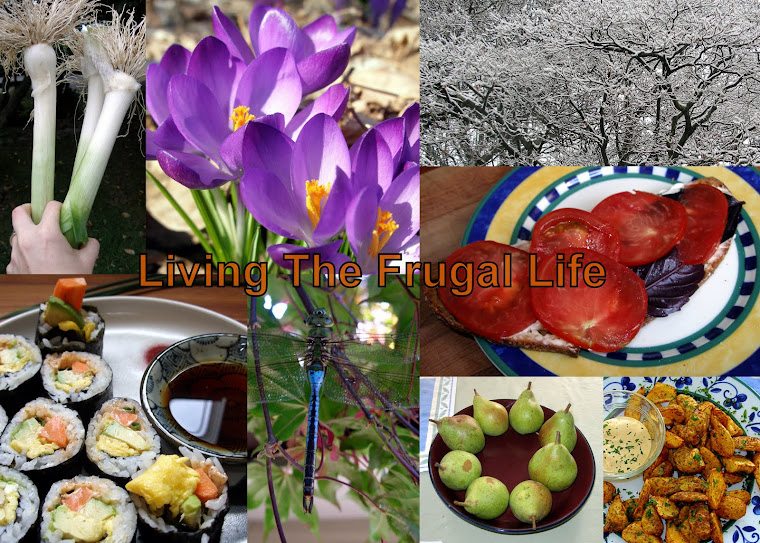
For the Christmas dinner we hosted for family, we finally gave in and bought a few vegetables at the grocery store. By and large, we had been subsisting on vegetables from our own garden that we either canned, froze or left to overwinter in the beds. But something fresh and green, other than our own leeks, seemed reasonable for Christmas dinner. So I bought a large head of organic broccoli.
Broccoli was one of our favorite vegetables before we began growing Tuscan kale. We haven't missed it at all since this kale became a staple of our diet. But undeniably, broccoli has its virtues too. One thing that few people realize about broccoli is that the stalk is also edible, or at least the core of the stalk is. The tough green skin covering the stalk will cause gas, but it's easy enough to peel.
Broccoli stalk is less flavorful than the florets, and its nutritional profile is slightly different, being notably higher in calcium and Vitamin C, but lower in other key nutrients. It has a nice, slightly watery crunch that's good in a stir-fry. I think it resembles a water chestnut more than anything else. It can be added in with the florets in pretty much any recipe that calls for them. I've also seen the stalk cut into neat batons and pickled. If pickled, the stalk will provide a healthy dose of fiber, but not much in the way of nutrition. In any case, broccoli stalk should be considered edible and not wasted. You should be able to get at least one extra serving of vegetable by including the stalk.

You can peel the stalk using a vegetable peeler. But I find it faster to pare it with a chef's knife. After removing the florets, trim the bottom and stand the stalk upright on your cutting board. Beginning in the middle of the stalk, cut downwards to remove the skin, cutting in just deeply enough to remove the outer and inner layers of peel. When the lower half is completely peeled, turn it upside down and peel the top half in the same way. The edible center will taper significantly at the end where the florets formed.

I'm particularly fond of broccoli stalk in a traditional Italian dish from the region of Puglia. Orecchiette con broccoletti is a dish of "little ears" pasta dressed with a garlicky olive oil-based sauce, and anchovies, hot pepper flakes, and broccoli rabe. It works fine with regular broccoli too, and I've prepared it several times for people who claim not to like anchovies. No one has ever complained. When cut up into small pieces, the stalk complements the dish nicely, falling into the bowl-shaped pasta pieces. And it fits in perfectly with the Italian abhorrence of waste in the kitchen.
But this time I used the broccoli stalk in a simple dish of stir-fried rice.

Broccoli leaves are highly edible and absolutely delicious when small (under 6" long). I once frequented a farmer's market where one vendor sold the baby broccoli leaves as cooking greens. They were highly addictive.
Do not save broccoli stalk or any other member of the cabbage family for use in making stock. The sulferous cabbage family becomes notoriously fartacious when cooked too long. Most other vegetable trimmings and peelings are good for making stock. Compost any non-edible parts of broccoli and its relatives.
More tiny tips: More Sunlight in Your Garden, Parboil Your Pasta, Repurpose Your Credit Card, Make the Most of Old Man Winter, Scallions





























